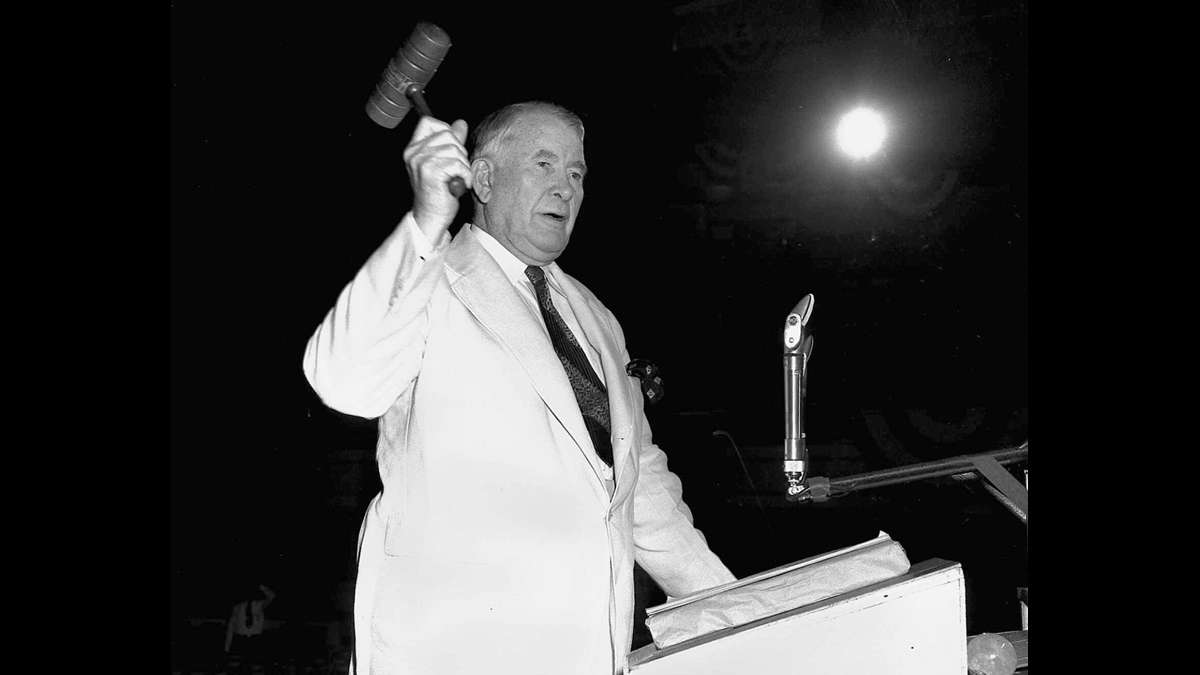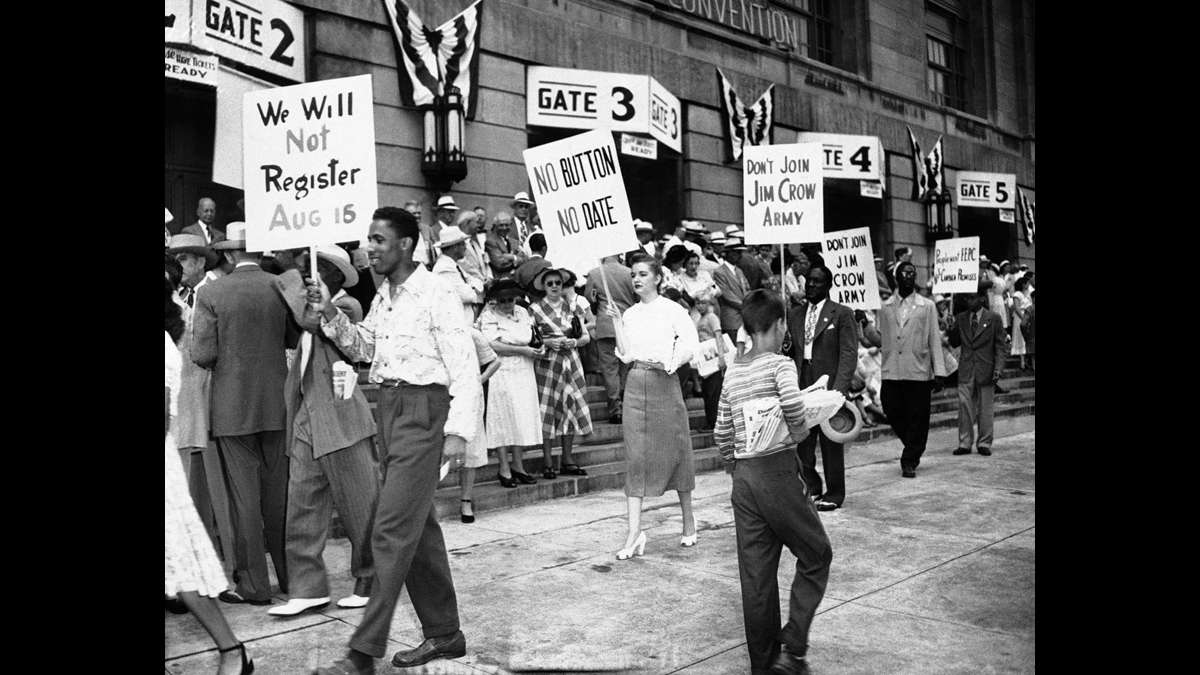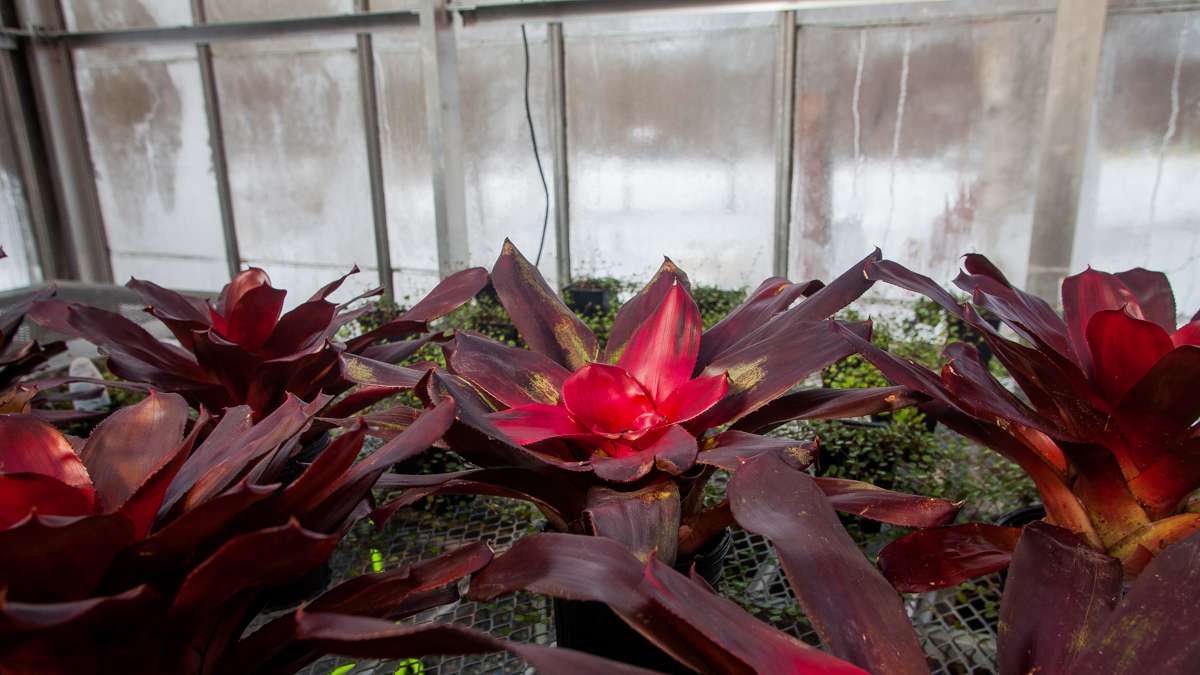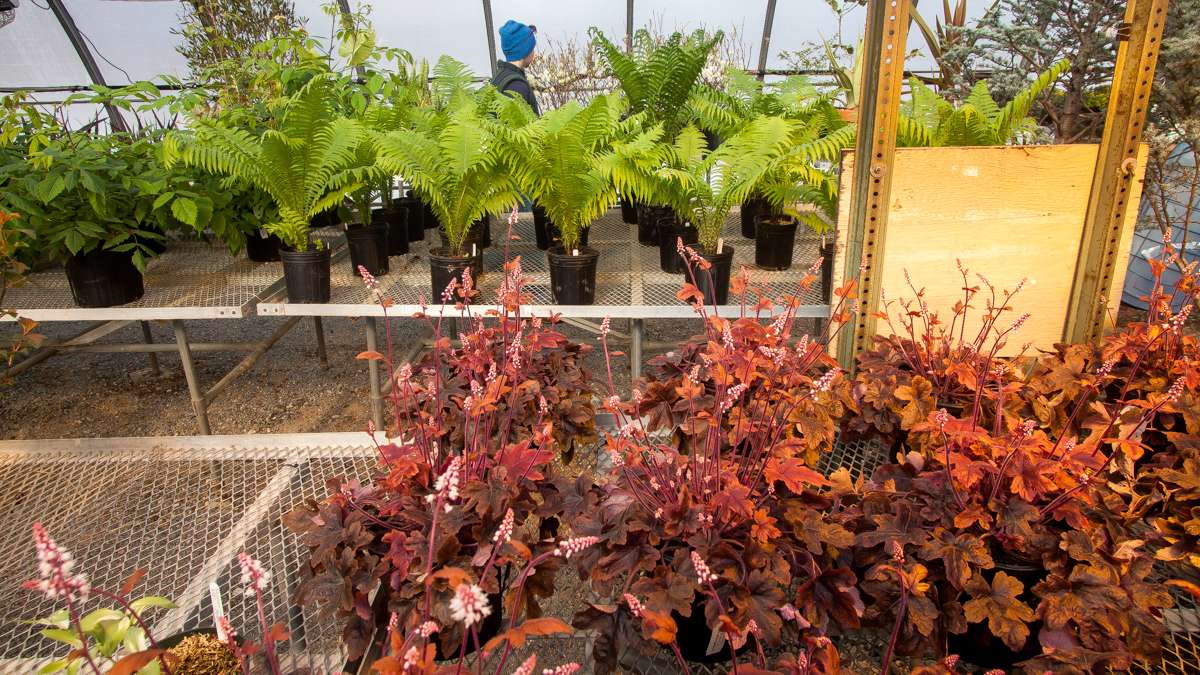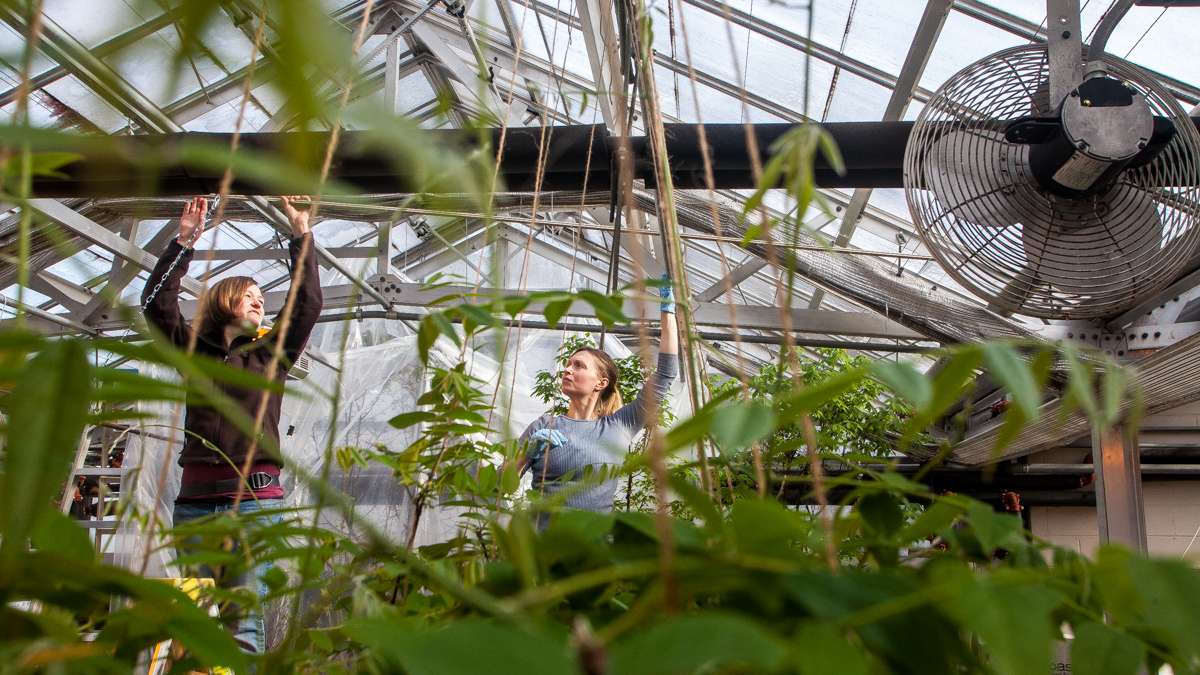Making spring come early for the Philly Flower Show [photos]
ListenIn the lead-up to the Philadelphia Flower Show, local growers work frantically to tease flowers into bloom in February.
The annual Philadelphia flower show doesn’t start until the end of the month, but this week is a frenzy of activity for local greenhouse owners trying to manipulate their plants into blooming just at the right moment.
“It’s been described by somebody as the world’s most elaborate horse race, run backwards,” said Lloyd Traven, owner of Peace Tree Farm in Kintnersville, Pa., where more than an acre of plants spread among 16 different greenhouses are being readied for the flower show.
Peace Tree is the primary ‘forcing’ outfit for the Philadelphia Flower Show, meaning Traven ‘forces’ plants to leaf out or bloom in time for the show.
“We are literally tricking Mother Nature into making a plant bloom on the exact date that we want it to bloom,” Traven said.
‘Forcing’ a months-long process
The process starts in the late summer and early fall, when Traven purchases the plant varieties specified by his customers, exhibitors at the flower show.
Each plant requires different treatments with heat, light and humidity in the months leading up to the show to get it to bloom at the right time.
Generally, Traven starts by forcing dormancy for several weeks in his 53-foot cooler in the late summer and early fall.
Beyond protecting plants, that cold period is necessary for the reproductive lifecycle of many species native to cold climates.
“They have chilling requirements, they need a certain number of hours of being cold to then be able to grow again in the spring and flower,” said Temple horticulture professor Sasha Eisenman.
After that chilling period is over, Traven then moves plants into warmer, more humid greenhouses.
He turns on high-intensity lights before dawn and after dusk to simulate longer growing days for the plants that require varied day-lengths to bloom.
Eisenman explains photoreceptors in plant tissue are sensitive to changes in sunlight and day-length.
“They basically change form depending on the light that they’re exposed to,” Eisenman said. “So as the period of time changes for light and dark, the switch goes back or forth.”
That switching, or the photoreceptors changing forms during day and night, establishes the plant’s equivalent of a circadian rhythm and sets the stage for blooming.
If a plant starts to bud or bloom too early, risking wilting by the time the show rolls around, Traven moves it back into a 35-degree greenhouse to slow the bloom progression.
Organization and dedication key
“We will walk the crops, sometimes twice a day, and we’ll decide whether something needs to be done,” said Traven, who owns the farm and lives on the property with his wife, Candy.
Traven has an Excel spreadsheet nearly 3,000 items long with every plant’s schedule detailing how much cooling it requires, how much it needs to be lit at night, and when it needs to be moved to a greenhouse with different conditions.
“There’s a whole slew of information,” Traven said. “That (list) is the bible.”
Traven prepares flowers for the flower show’s sponsor, the Pennsylvania Horticulture Society, and more than two dozen exhibitors at the flower show.
A forcing frenzy
Some exhibitors do their own forcing, including Temple University’s Department of Landscape Architecture and Horticulture, housed at the school’s Ambler campus.
Typically known for their use of local plants in exhibits, Temple horticulturalist Kathryn Reber said this year the team is preparing an exhibit highlighting how light plays off plants in the ‘blue hour’ and ‘golden hour’ around sunrise and sunset.
With a much smaller operation than Peace Tree Farm, Reber has one greenhouse, kept around 65 or 70 degrees, and one hoop house, kept about 15 to 20 degrees cooler.
This week is a dance of adding heat mats under plants to heat them up from the roots, changing their lighting, and moving them from warm to cold, and back again.
“Some of our daffodils are moving quite quickly, so those are actually in an area that’s exposed to the outdoor temperatures,” Reber said, an un-heated breezeway.
Within the warmer greenhouse, she has built a plastic tent for three trees that have yet to grow many leaves, a ‘greenhouse within a greenhouse’.
“We mist them to keep the humidity levels higher, and those we’re trying to push along and convince them to move a little faster,” Reber said.
An eastern red bud tree, which just started to push out tiny, delicate white buds last week, is being held in the cooler greenhouse to slow bloom progression.
Painting with nature’s palette
Heat and light are generally manipulated to get flowers, trees and shrubs to bloom or leaf out in time for the flower show, but there are other variables that can be controlled, like color.
Reber has a table of bromeliads, yellow-green plants that look like giant pineapple tops, under 600-watt bulbs 14 hours a day to make them turn orange for the show.
“That’s the color that they get when they’re outside in the summer, when they’re really just roasting out in the gardens, and so that’s the color I’d really like to have for the show,” Reber said.
This color change is a sign of a plant beefing up its defenses against UV damage.
“We put on sunscreen, plants put on sunscreen, they just create it themselves,” Sasha Eisenman said. “They have actual chemicals that they can produce which protect them from the same problems that we experience that get too much sun exposure.”
In this bromeliad, that chemical protectant is an orangey-red, just the color Reber wants for her flower show exhibit to emulate the golden hour hue.
Toying with nature, a dangerous game
Manipulating Mother Nature is not without its near- catastrophes. When the power went out in Ambler during a storm last winter, Reber had to move her plants to a school bus to keep them from freezing.
“[They] sat on the school bus running 24 hours a day for at least a day and a half, and it kept everything warm,” Reber said. “We had a few issues, but we made it through.”
At Peace Tree Farm, where about an acre’s worth of plants are being forced for the flower show, a school bus wouldn’t be big enough to stave off disaster.
During another storm last year, Lloyd Traven had another secret weapon.
“Last year our dog literally saved the Philadelphia flower show,” Traven said.
Traven and his wife were asleep when, unbeknownst to him, his greenhouses ran out of heating fuel and the temperature dropped.
“We’re fast asleep, it’s about five in the morning and the dog is not going to leave me alone, she’s clawing at my arm and whimpering and she made sure I woke up,” Traven said.
The dog had heard an alarm on Traven’s computer, alerting him all too quietly that temperatures had dropped dangerously low in his greenhouses.
After a frantic morning on the phone with the fuel company, Traven got a delivery around 9 a.m. and turned the heat back on.
“We could have frozen everything a week and a half before the flower show,” Traven said. “That would have been horrible for us, and for the show.”
So far, it’s been smoother sailing for both Reber and Traven this year, as the weather has been a bit kinder.
If they do their jobs well, the home gardeners who visit the flower show will walk away with ideas of what to plant this spring, when Mother Nature will supply the heat and light to make them bloom.
This is an updated version of an article that published on Feb. 16.
WHYY is your source for fact-based, in-depth journalism and information. As a nonprofit organization, we rely on financial support from readers like you. Please give today.


